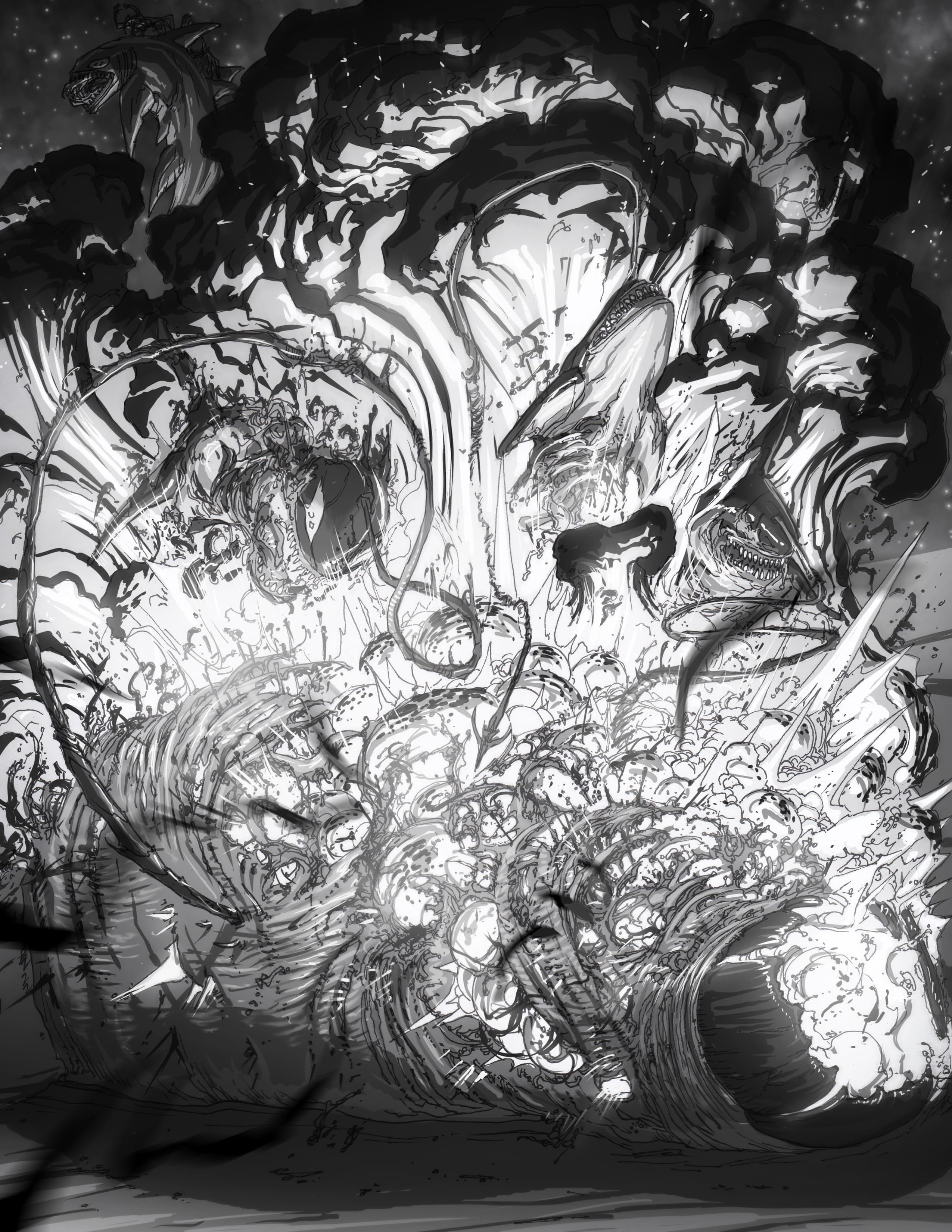Gooday everyone,
Welcome to the Deacon Corner. If you’re new here, these galleries dive into the inspirations behind the images you’ll find throughout the books posted on these pages. In these issues, I also like to share the commission details for each project, so readers can follow along with how these images came to life.
If there’s a particular piece you’re curious about, you can find all previous issues under my journal entries or linked directly beneath the images within each chapter.
Now before we begin, none of these beautiful art pieces would exist without the incredible talent of Sickjoe who is the creative force behind all the artwork in these books. Quite literally the heart and soul of this visual world. If you appreciate his work as much as I do, I encourage you to visit his gallery and explore more of his stunning creations.
Now, without further ado, let's take a look at the featured image and the commission details below.

Wounded and diminished, Xerxes returns to the remnants of his hive following his catastrophic defeat at the hands of Icarus. With his ranks shattered and his dominance broken, he turns to desperation.
In the sanctuary of his hive, nestled precariously in the ceiling of the Overworld, Xerxes gathers the last of the crimson rain, the strange and maluable fluid only summoned in the belly of a Leviathan. From it, he forges a new brood, hoping to reclaim his former strength. But this time, he changes his strategy.
Inspired by the ferocity of Icarus’s Behemoth, Xerxes begins crafting a new weapon; a massive maggot, bloated and near-immobile, housed in the heart of his hive. This creature is filled with an unstable, alchemical cocktail intended as a final, apocalyptic trump card.
But while Xerxes rests, Persephone strikes.
Having studied her enemies well, she knows where he nests and when he’s weakest. Her Orcas, bred for aquatic assault, are retooled for siege. They launch harpoon-like tendrils into the hive above, embedding deep into its flesh and structure. Then, with terrible grace, they pull.
Xerxes’s hive, a once-proud bastion of aerial supremacy, is dragged from the ceiling into the sands below, scattering his harpies mid incubation, their wings too soft for flight. They flap uselessly in the dust, picked off by Orcas like fish devouring insects from the surface of a pond.
Then the maggot is revealed.
It is too large for even Persephone’s creations to drag down on their own. Frustrated but relentless, her forces swarm the creature, tearing into its flesh, their combined weight eventually dragging it beneath the sands.
But as Persephone watches, something feels wrong.
The maggot does not resist. It does not strike. It simply sinks.
Then she hears it: the pop of a grenade pin.
She escapes only barely.
The maggot’s unstable core erupts, spewing liquefied fire and toxic bile in all directions. The blast scars the roof of the Overworld, a jagged wound that burns long after the dust settles. Persephone’s army is shredded and her Orcas reduced to bubbling pulp, the sands alight with chemical flame.
Xerxes’s final creation is an explosive success.